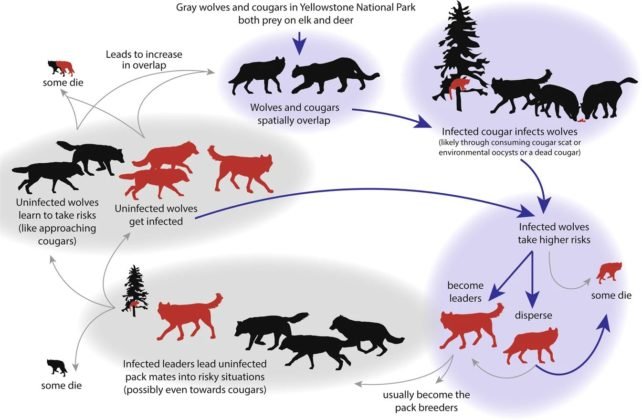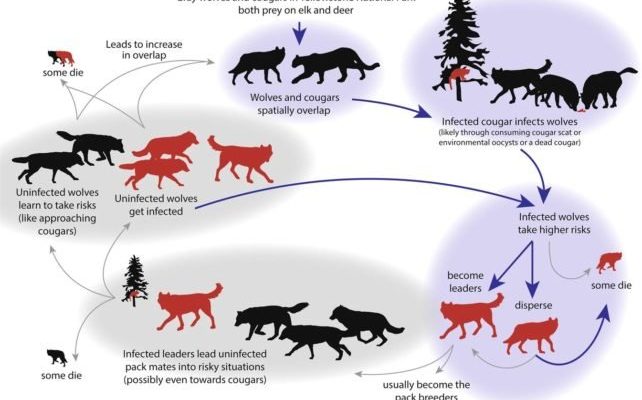
Wolf worms, mainly found in the northern parts of the United States and Canada, are the larvae of the cuterebra fly. These maggots are notorious for infesting small mammals, particularly rabbits and rodents, but pet owners need to be aware of their potential impact on dogs and cats, too. So, let’s dive into the world of wolf worms and explore their seasonal patterns, how they affect animals, and what you can do to keep your furry friends safe.
What Are Wolf Worms?
Wolf worms are the larval stage of the cuterebra fly, a parasite that lays its eggs on or near the host animal. When the eggs hatch, the larvae burrow into the skin of the host, creating a cavity where they grow. This might sound a bit gruesome, but it’s important to understand how this occurs to appreciate the impact they have on wildlife and pets.
You might be wondering how these tiny pests manage to find their way to their hosts. The adult cuterebra flies are attracted to the scents of small mammals, often hovering around their burrows. Once they find a suitable spot, they lay their eggs. When the larvae hatch, they wiggle their way into the host’s skin, leading to potential health issues.
In many cases, the animal may not show immediate symptoms, but don’t be fooled. As the larvae grow, they can cause significant discomfort, leading to infections or other complications. So, what does this mean for your pets, especially if they love to roam in the great outdoors?
Seasonal Patterns of Infestation
Wolf worm infestations tend to follow a seasonal pattern, making awareness particularly important for pet owners. Typically, these larvae are most prevalent during warm months, particularly from late spring to early fall. This is when cuterebra flies are most active, laying eggs in high numbers.
Here’s the thing: during this time, small mammals like rabbits and rodents are also more active, making it the perfect opportunity for wolf worms to find their hosts. Imagine a picnic: the inviting warmth brings everyone out, and the same goes for these pests. So, if you live in an area where wolf worms are common, keep an eye on your pets during these months.
During colder months, the infestations decrease significantly as the flies die off or go dormant. It’s almost like a natural reset button. Still, it’s essential to remember that just because they are less active in winter doesn’t mean you should let your guard down completely.
Symptoms of Wolf Worm Infestation in Pets
If you suspect your pet might be dealing with wolf worms, it’s crucial to recognize the symptoms early. Common signs include:
- Swelling or lumps: You might notice unusual bumps or swelling on your pet’s skin.
- Itching or irritation: Your pet may scratch or bite at the affected area.
- Discharge: Sometimes, an infected area might ooze a pus or other fluids.
- Behavior changes: If your pet seems more withdrawn or irritable than usual, keep an eye on them.
If you see any of these signs, it’s time to check in with your veterinarian. Early intervention can mean the difference between a simple treatment and a more complicated recovery process.
Treatment Options
Once a wolf worm infestation is confirmed, treatment should be prompt. You might be wondering what the options are. Here’s a basic overview of common treatment methods:
1. **Veterinary Examination:** Your vet will probably start with a thorough examination. This might involve checking the lumps or swelling to determine if they’re related to wolf worms.
2. **Removal of Larvae:** If your pet is infested, the larvae will need to be removed. This can often be done manually, but it’s crucial to let a professional handle it to avoid complications.
3. **Antibiotics:** If the site of infestation is infected, your vet may prescribe antibiotics to help clear it up.
4. **Pain Management:** Depending on how your pet is feeling, pain relief may be necessary to ensure they’re comfortable during recovery.
In all cases, follow your vet’s aftercare recommendations closely. You wouldn’t want to face more issues later on!
Preventing Wolf Worm Infestations
Prevention is your best friend when it comes to dealing with wolf worms. Here are some practical steps to minimize the risk for your pets:
– **Regular Vet Check-Ups:** Routine check-ups can help catch any potential issues early before they escalate.
– **Limit Outdoor Exposure:** Keep a close eye on your pets when they’re outside, especially in areas where small mammals are prevalent.
– **Keep Your Yard Clean:** Clearing away brush, debris, and tall grass can help minimize the habitats for small animals and the cuterebra flies that pursue them.
– **Use Protective Barriers:** Consider fencing your yard or using pet-safe repellents to deter small animals from entering your space.
By being proactive, you can significantly reduce the chances of an infestation disrupting your pet’s health and happiness.
Wolf worms may sound scary, but knowledge is power. If you understand what they are and how their seasonal patterns work, you can be better prepared to protect your pets. Keep an eye on any symptoms, visit your vet regularly, and take preventive measures to create a safe environment for your furry friends.
Remember, your pets rely on you to stay safe and healthy. By being informed about wolf worms and their impacts, you’ll ensure your pets enjoy their outdoor adventures without unwanted guests crashing the party.

